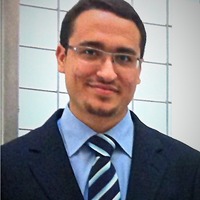Papers by alaba B ojediran

DIGITAL FORENSIC A PANACEA FOR EVIDENCE PRESERVATION_Ojediran AB, 2018
Digital Forensic is the preservation, identification, recovery, documentation, analysis, and inte... more Digital Forensic is the preservation, identification, recovery, documentation, analysis, and interpretation of digital evidence. Digital evidences are electronically stored records, facts, signs, information of probative value that shows clearly that an event occurred or that a crime has been committed. Preservation of Digital Evidence is the crux of Digital Forensics. As such, it must be handled in a way to ensure that it is promptly identified, preserved, collected, examined, analyzed and documented appropriately so that it is evidently weighty, authentic, reliable, believable, complete and that it passes the test of legal admissibility. Evidence Preservation is being constantly plagued with issues needed to be technically, administratively and legally resolved. Of which is, the rate of standardization of Digital Forensics Processes, particularly evidence preservation, by International standardizing bodies is slower than the challenges and continuously evolving digital technology. Consequently, Proactive, Sustained and Non-fragmented Research and Practitioner Communities must be established, where they do not exist and also supported by national and regional standardization organizations, to see to faster and up-to-date solutions. Such communities have greatly helped to sustain continuous growth and standardization in other fields such as software engineering, web frameworks, and mobile technology. A consolidated framework, the Enhanced Generic Digital Forensic Investigation Model (EGDFIM), is proposed in this work.
Megacity Stakeholders prioritise to protect these cities from threats rather than just reactively... more Megacity Stakeholders prioritise to protect these cities from threats rather than just reactively responding to them, however the success of managing these cities hinges on the availability of evidences (data) to justify decisions. The challenge is that the sources of evidences are very diverse and dynamic in these cities. Using the proposed model (MEDFORM), we seek how evidences can be aggregated and integrated from the diverse sources, model future events and threats using the evidences, to plan, build and manage such mega cities. Lagos State University, a megacity University community in an emerging megacity like Lagos, is used as a test case study for the model.
As megacities emerge in splendor, so also do threats to security and sustainability of these citi... more As megacities emerge in splendor, so also do threats to security and sustainability of these cities. Earlier research found out that the leading threat amongst several security and safety threats in megacities are organized crimes. Since technology is involved in all facets of megacities, including the threats therein, this paper seeks to stimulate scientific curiosity in finding out effective and sustainable ways of harnessing technology in readiness, to protect these cities from threats rather than reactively responding to them. Using Lagos State, an emerging mega city as a case study, we seek how to systematically execute this concern which should be built from the scratch into megacities systems.A Megacity Digital Forensic Readiness Model (MEDFORM) is proposed in this paper.
Thesis Chapters by alaba B ojediran

Digital Forensic is the preservation, identification, recovery, documentation, analysis, and inte... more Digital Forensic is the preservation, identification, recovery, documentation, analysis, and interpretation of digital evidence.
Digital evidences are electronically stored records, facts, signs, information of probative value that shows clearly that an event occurred or that a crime has been committed.
Preservation of Digital Evidence is the crux of Digital Forensics. As such, it must be handled in a way to ensure that it is promptly identified, preserved, collected, examined, analyzed and documented appropriately so that it is evidently weighty, authentic, reliable, believable, complete and that it passes the test of legal admissibility.
Evidence Preservation is being constantly plagued with issues needed to be technically, administratively and legally resolved. Of which is, the rate of standardization of Digital Forensics Processes, particularly evidence preservation, by International standardizing bodies is slower than the challenges and continuously evolving digital technology. Consequently, Proactive, Sustained and Non-fragmented Research and Practitioner Communities must be established, where they do not exist and also supported by national and regional standardization organizations, to see to faster and up-to-date solutions. Such communities have greatly helped to sustain continuous growth and standardization in other fields such as software engineering, web frameworks, and mobile technology.
A consolidated framework, the Enhanced Generic Digital Forensic Investigation Model (EGDFIM), is proposed in this work.
Conference Presentations by alaba B ojediran
As megacities emerge in splendor, so also do threats to security and sustainability of t... more As megacities emerge in splendor, so also do threats to security and sustainability of these cities. Earlier research found out that the leading threat amongst several security and safety threats in megacities are organized crimes. Since technology is involved in all facets of megacities, including the threats therein, this paper seeks to stimulate scientific curiosity in finding out effective and sustainable ways of harnessing technology in readiness, to protect these cities from threats rather than reactively responding to them.
A Megacity Digital Forensic Readiness Model (MEDFORM) is proposed in this presentation.











Uploads
Papers by alaba B ojediran
Thesis Chapters by alaba B ojediran
Digital evidences are electronically stored records, facts, signs, information of probative value that shows clearly that an event occurred or that a crime has been committed.
Preservation of Digital Evidence is the crux of Digital Forensics. As such, it must be handled in a way to ensure that it is promptly identified, preserved, collected, examined, analyzed and documented appropriately so that it is evidently weighty, authentic, reliable, believable, complete and that it passes the test of legal admissibility.
Evidence Preservation is being constantly plagued with issues needed to be technically, administratively and legally resolved. Of which is, the rate of standardization of Digital Forensics Processes, particularly evidence preservation, by International standardizing bodies is slower than the challenges and continuously evolving digital technology. Consequently, Proactive, Sustained and Non-fragmented Research and Practitioner Communities must be established, where they do not exist and also supported by national and regional standardization organizations, to see to faster and up-to-date solutions. Such communities have greatly helped to sustain continuous growth and standardization in other fields such as software engineering, web frameworks, and mobile technology.
A consolidated framework, the Enhanced Generic Digital Forensic Investigation Model (EGDFIM), is proposed in this work.
Conference Presentations by alaba B ojediran
A Megacity Digital Forensic Readiness Model (MEDFORM) is proposed in this presentation.
Digital evidences are electronically stored records, facts, signs, information of probative value that shows clearly that an event occurred or that a crime has been committed.
Preservation of Digital Evidence is the crux of Digital Forensics. As such, it must be handled in a way to ensure that it is promptly identified, preserved, collected, examined, analyzed and documented appropriately so that it is evidently weighty, authentic, reliable, believable, complete and that it passes the test of legal admissibility.
Evidence Preservation is being constantly plagued with issues needed to be technically, administratively and legally resolved. Of which is, the rate of standardization of Digital Forensics Processes, particularly evidence preservation, by International standardizing bodies is slower than the challenges and continuously evolving digital technology. Consequently, Proactive, Sustained and Non-fragmented Research and Practitioner Communities must be established, where they do not exist and also supported by national and regional standardization organizations, to see to faster and up-to-date solutions. Such communities have greatly helped to sustain continuous growth and standardization in other fields such as software engineering, web frameworks, and mobile technology.
A consolidated framework, the Enhanced Generic Digital Forensic Investigation Model (EGDFIM), is proposed in this work.
A Megacity Digital Forensic Readiness Model (MEDFORM) is proposed in this presentation.